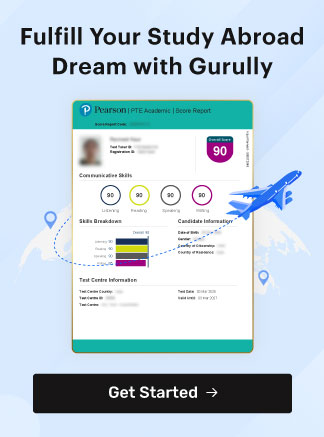Exam like PTE, DUOLINGO, and IELTS have become crucial gateways for students seeking higher education or career advancement in English-speaking countries. English proficiency Exam Practice assess both language ability and critical thinking and comprehension skills, making them pivotal in shaping academic and professional trajectories.
However, the stakes are high, and the journey to proficiency can be challenging. According to recent studies, nearly 60% of students report feeling anxious about these exams, often due to the pressure of achieving a specific score for university admissions or job opportunities.
For many, this anxiety is compounded by the realization that their performance may not solely reflect their language skills but also their unique backgrounds. An individual’s background—encompassing cultural, social, and linguistic factors—significantly impacts their performance on the English proficiency exam. Understanding this connection is essential for students preparing for these tests, allowing them to leverage their unique experiences and perspectives to enhance their language skills and boost their confidence.
In this blog, we will explore how identity shapes language learning and how students can navigate the complexities of English proficiency exams with greater awareness and support.
Understanding the Complexities of Identity
Identity is a multifaceted concept encompassing various cultural, social, and linguistic elements. Cultural identity refers to the shared beliefs, values, customs, and practices that define a group, often influenced by ethnicity, nationality, and traditions. On the other hand, social identity is shaped by an individual’s relationships and interactions within different social groups, including family, friends, and communities.
Linguistic identity is closely tied to the languages one speaks and the dialects used. These reflect not only communication styles but also cultural heritage and personal experiences. These components create a rich tapestry of identity that influences how individuals perceive themselves and others.
The Role of Identity in Shaping How We Speak English
Identity plays a significant role in shaping how we speak English, influencing our choice of words, pronunciation, grammar, and overall communication style.
Language Variation
Cultural and social backgrounds lead to variations in English usage, including regional accents, dialects, and idiomatic expressions. For example, a student from the Southern United States may use distinct phrases that differ from those of a student from the UK or Australia. While these variations enrich the language, they can also challenge understanding and communication.
Confidence and Comfort
An individual’s identity significantly impacts their confidence when speaking English. Students who take pride in their cultural backgrounds are often more willing to express themselves, while those who feel marginalized may hesitate to participate. This lack of confidence can hinder their performance on English proficiency exam, where effective communication is crucial.
Cultural Nuances
Identity shapes our understanding of cultural nuances in language, such as humor, sarcasm, and politeness, which vary across cultures. Students aware of these nuances can navigate conversations more effectively, while those unfamiliar may struggle to understand the intended meaning.
The Impact of First Language on English Proficiency
Linguistic transfer happens when a person’s first language (L1) affects how they learn and use a second language (L2), like English. This can be helpful or confusing. For example, a Spanish speaker might find using certain verb forms in English easy because both languages share similarities. However, a Chinese speaker might have trouble with English articles like “a” and “the” since Mandarin does not use them, leading to mistakes.
Common Challenges
Different language backgrounds can create specific challenges for English learners. Some common issues include:
- Pronunciation Problems:
Some sounds in English may not exist in a learner’s L1. For example, Arabic speakers might confuse the “p” sound with a “b” sound because Arabic does not have a “p.” - Grammar Confusion:
Different grammar rules can confuse learners. For instance, Russian speakers may struggle with English tenses since Russian verbs work differently. - Vocabulary Gaps:
Some English words may not have direct translations in a learner’s L1, making it hard to understand or use them correctly. For example, the word “privacy” might not exist in some languages, leading to misunderstandings.
Examples of Language-Specific Interference
Language-specific interference occurs when a learner’s L1 features cause mistakes in English. Here are a few examples:
- Word Order Mistakes:
In Japanese, the usual sentence order is subject-object-verb (SOV). A Japanese speaker might say, “I apple eat,” instead of “I eat an apple.” - Direct Translations:
Learners might translate phrases directly from their L1 to English, which can sound strange. For example, a French speaker might literally translate “It’s raining cats and dogs,” causing confusion. - Overgeneralization:
Learners might incorrectly apply rules from their L1 to English. For example, a German speaker might say, “She is more taller than him,” instead of “She is taller than him.”
Recognizing how L1 affects English learning helps students understand their challenges and find ways to improve their language skills.
Cultural Factors and English Language Test Performance
In collectivist cultures, education is a shared responsibility, motivating students to perform well for their families and communities.
In individualistic cultures, personal achievement and self-expression may be prioritized, influencing study habits and engagement.
Effects on Exam Preparation
Different attitudes toward English exam preparation can affect motivation, study techniques, and stress levels before English proficiency exams.
Test-Taking Strategies
- Approaches to Test-Taking:
-
-
- Students from cultures that emphasize rote memorization may focus on memorizing facts.
- Those from cultures that encourage critical thinking may prioritize understanding concepts and applying knowledge.
-
- Variations in Strategy:
-
- Some cultures promote competitive strategies, leading to faster, accuracy-focused approaches.
- Others may emphasize collaboration, affecting how students manage time and seek clarification during exams.
Cultural Biases in Exam Content
- Impact of Cultural Biases:
-
-
- Exam materials may include references or idioms familiar to native English speakers, which are disadvantageous to non-native speakers.
- Reading passages about specific cultural events may confuse students unfamiliar with those contexts.
-
- Consequences:
-
- Questions based on Western culture can create unfair advantages, impacting comprehension and test scores.
- Addressing these biases is essential for creating a fair testing environment for all students.
Understanding these cultural factors can help students adapt their preparation and approach English proficiency exams with greater confidence.
Socioeconomic Status and English Proficiency
Correlation with Language Skills
Relationship Overview: There is a strong correlation between socioeconomic status (SES) and English proficiency. Higher SES often leads to better access to educational resources, which can enhance language skills.
Access to Education
Disparities in Education: Students from lower SES backgrounds may face barriers to quality education, such as underfunded schools and fewer language programs, which can impact their English proficiency.
Role of Social Capital
Influence of Networks: Social capital, including family support and community resources, plays a crucial role in exam preparation. Students with strong social networks often have better access to study materials, tutoring, and encouragement, which can improve their performance.
The Role of Education and Exposure in Giving English Proficiency Exam
Impact of Formal Education
Structured Learning: Formal education provides a structured environment that enhances English proficiency through systematically teaching grammar, vocabulary, and communication skills.
Importance of Media Exposure
Role of English Media: Exposure to English language media, such as books, films, and podcasts, helps learners improve their listening, reading, and speaking skills, making language acquisition more engaging and effective.
Influence of Travel and Cultural Exchange
Benefits of Travel: Traveling and participating in cultural exchanges allow students to practice English in real-life situations, enhancing their language skills and cultural understanding through immersion.
Overcoming Challenges and Maximizing Potential
Strategies for Diverse Test-Takers
- Practice Regularly: Improve proficiency by engaging in daily English practice through speaking, writing, reading, and listening. Use specific English Proficiency mock tests for focused practice.
- Utilize Language Resources: To enhance learning, use language apps, PTE practice exam mobile apps, online courses, and community language programs.
- Join Study Groups: Collaborate with peers in study groups to share knowledge, practice speaking, and provide mutual support.
- Seek Feedback: Ask teachers or language partners for constructive feedback on speaking and writing to identify areas for improvement.
Recommendations for Educators and English Proficiency Teaching Institutes
-
- Provide Customized Support: Offer tailored resources and support for students from different backgrounds, including language workshops and tutoring sessions.
- Incorporate Cultural Content: Include diverse cultural references in teaching materials and exams to make learning more relatable and engaging.
- Encourage Open Communication: Foster an environment where students feel comfortable discussing their backgrounds and challenges, allowing educators to address their needs better.
- Use Gurully Institute Software: Gurully offers institutes comprehensive PTE and IELTS practice resources with authentic exam questions. This allows for the management of student preparation while tracking their progress efficiently. Our institute software with AI-powered scoring provides detailed feedback, and our platform enables easy tutor access and material uploads to streamline institute operations.
By implementing these strategies and recommendations, students can overcome challenges and maximize their potential in English proficiency exams, leading to greater success in their academic and professional endeavors.
Conclusion
In conclusion, understanding the various factors that influence English proficiency, including identity, cultural background, and socioeconomic status, is essential for students preparing for language exams. By recognizing these influences and implementing effective strategies, learners can maximize their potential and enhance their performance.
To kickstart your preparation, take advantage of the Gurully English Proficiency Exam Practice platform for PTE, IELTS, Duolingo, and CELPIP, and get a free practice test today to assess your skills and identify areas for improvement!
Also Read:
- A List of Canadian Scholarships for International Students in 2024-2025
- 6 Study Abroad Scholarships For Indian Students to Study in the USA







